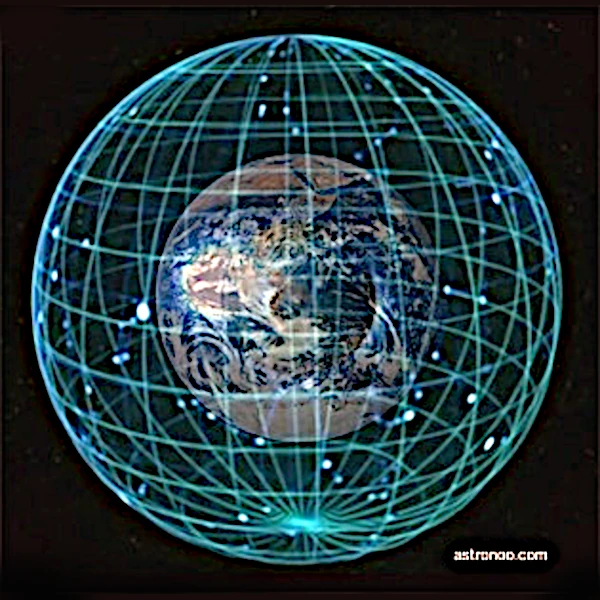
On Earth, the position of a place is defined by its geographic coordinates: latitude and longitude. In the sky, astronomers use an equivalent system called the equatorial coordinate system, based on the projection of the Earth's equator and the Greenwich meridian onto the celestial sphere. The two essential parameters of this system are declination (Dec) and right ascension (RA or \(\alpha\)). This system allows for precisely specifying the position of a star, galaxy, or planet in the celestial vault.
The celestial sphere is a geometric construction that represents the sky as a sphere centered on the observer, infinitely distant. By projecting the terrestrial axes onto it, a grid of fixed celestial coordinates is obtained. Unlike horizontal coordinates (azimuth and altitude), which depend on the location and time of observation, equatorial coordinates are independent of the observer.
Declination (denoted \(\alpha\)) is the celestial analogue of terrestrial latitude. It measures the angle between the celestial object and the celestial equator, in the north-south plane. Expressed in degrees, minutes, and seconds of arc, it ranges from \(+90^\circ\) (at the north celestial pole) to \(-90^\circ\) (at the south celestial pole).
Right ascension (denoted \(\alpha\)) is the celestial analogue of longitude, but expressed in hours, minutes, and seconds, as it is related to the Earth's rotation. It is measured from the vernal equinox point (or gamma point, where the Sun crosses the equator at the moment of the spring equinox) eastward to the projection of the meridian passing through the object. Right ascension ranges from \(0^\mathrm{h}\) to \(24^\mathrm{h}\), a full circle of 360°.
The combination \((\alpha, \delta)\) thus allows for precisely locating any fixed object on the celestial sphere, independent of time and observation location, except for corrections due to the precession of the equinoxes, nutation, or atmospheric refraction for precise measurements.
As seen from Earth, the celestial sphere appears to rotate around the axis of the celestial poles in 23h56m (a sidereal day). In this apparent motion, celestial objects move from east to west at a speed of 15° per hour, which corresponds to 1 hour of right ascension. Thus, knowledge of RA and Dec allows for predicting the exact moment when a star will appear at a certain position in the sky.
Motorized equatorial telescopes use these coordinates to automatically track celestial objects, compensating for Earth's rotation via a motor turning at the sidereal rate.
To locate a given star, astronomical catalogs such as the Messier catalog or the NGC always indicate the equatorial coordinates (often at a reference epoch, typically J2000.0). For example, the Andromeda galaxy (M31) has the coordinates:
This means it is close to the north celestial pole, always visible from the temperate latitudes of the northern hemisphere.
Software like Stellarium or mobile applications today allow for directly entering these coordinates to display the position of an object and point an observation instrument.
The equatorial coordinate system, with declination and right ascension as fundamental axes, constitutes a stable, precise, and universal grid for mapping the sky. It allows astronomers to locate and track celestial objects with great precision, facilitating observation, space navigation, and astrophysical research.
Although abstract at first glance, these coordinates quickly become intuitive for anyone using an equatorial mount, planetarium software, or interested in fundamental celestial mechanisms.